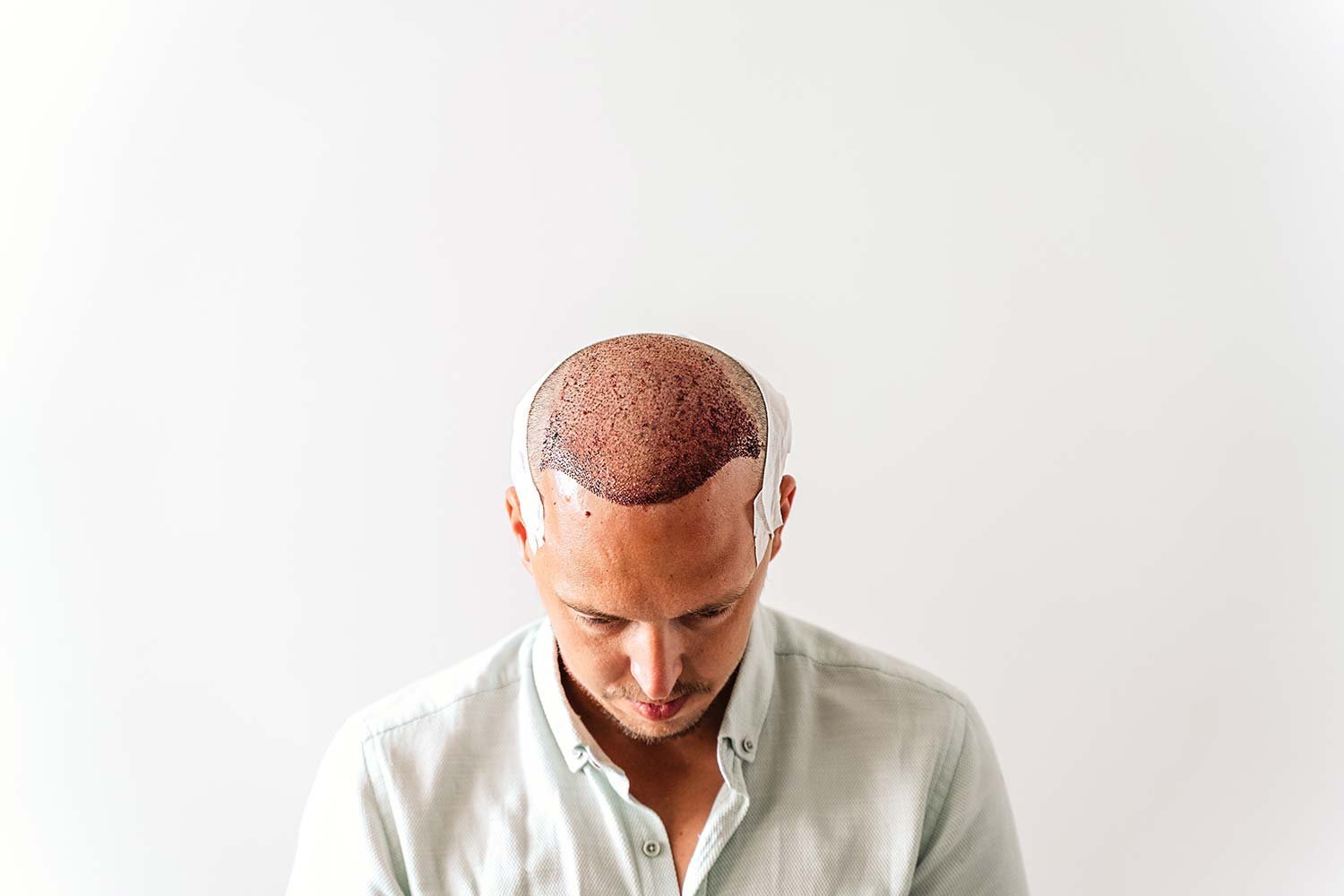There is nothing good about losing hair. Hair loss can make you feel dated, limits how you style your hair, and steals your youthfulness and semblance of health.
A simple Google search of ‘hair loss remedies’ yields 286,000,000 results! Very understandable considering most people would rather keep their crowning glory than lose it.
Why Is Hair So Important?
The importance of scalp hair is biological, psychological, and social. However, the psychological and social need for hair seems to trump its biological function.
Biologically, hair provides some padding on the top of the head as protection from the sun’s rays.
Psychologically and socially, hair is an essential part of one’s self-identity and body image. A full, lush head of hair is associated with good health, vigor, virility, beauty, youthfulness, gender, and status.
Hair can be styled, altered, colored, and adorned to match what an individual is feeling on the inside.
Indeed, styling your hair is one of the things you get to do as part of your morning routine. Not just that, but a bad hair day is a phrase that explains days when your hair just decided to act up and how this can dampen your mood for the day. Now, imagine extreme hair loss and picture the number of bad hair days. Everyday. For years.
Enter Hair Transplants
Also, imagine the lengths you would go through to get your healthy, lush hair strands back. This can help explain why hair transplants have become so popular seemingly overnight.
Hair transplants offer excellent results for people struggling with hair loss, albeit with a disclaimer. The success and longevity of a hair transplant doesn’t just happen. There are things you can do before and after the transplant to ensure your new hair stays in place and grows long and thick.
How Long Should A Hair Transplant Last?
Before we get into the specifics of how to make your transplant last, let’s look at how long it could potentially last.
When done correctly and well cared for, a hair transplant should last a lifetime. This is because the transplanted hairs are taken from the sides and back of your head. The hairs in these spots are resistant to the hair loss process. Conversely, hairs on the top and the crown of the head are very susceptible to either the male pattern of hair loss or the female hair loss pattern.
The hairs from the back and ear to ear are largely unaffected by many of the factors that cause hair loss. This means you are taking these resilient hairs to the thinning or balding spots, where they thrive for decades to come, making the idea of forever hair possible.
Ensuring the Longevity of Your Hair Transplant
Hair transplants don’t come cheap. The road to recovery is also not a walk in the park. As such, you want this to be a one-and-done scenario where you walk away with excellent results that last a lifetime.
Let’s look at some things you can do to make this a reality.
1. Get It Done Right
The most crucial thing about hair transplant longevity is where and who you go to for the procedure.
Experience and expertise
Expertise comes from training, knowledge, and skill, while experience comes from doing something over time. When it comes to surgery, one won’t do without the other.
You need a hair transplant surgeon with formal training to carry out the procedure. You also need the surgeon to have done numerous transplants. This lets you know that they know the ins and outs, have perfected their skills, and have learned the nuances of hair transplants.
Similarly, inquire about their experience with your hair type. For example, a surgeon who has transplanted afro-hair is the best bet if you have afro-hair. This hair type is curly, and it takes a special skill to harvest and transplant a curved hair follicle without damaging it.
Assessment
The surgeon should thoroughly assess your health, including your mental state.
Some types of baldness, like alopecia areata, are contraindicated in hair transplants. The reason is that an autoimmune condition causes this form of baldness. As such, the condition will still attack the newly transplanted hair, causing it to fall off. If you are a bad candidate for a hair transplant, the new hair will be short-term, at the very least.
Reputable Facility
While transplants are done at more affordable rates in countries like Turkey, these don’t always give the best results. Identify a reputable, licensed facility that adheres to the highest codes of conduct. You are unlikely to pick up infections from such facilities, and the procedure will likely be done right.
One thing that could go wrong in a sub-par facility is the overcrowding of hair follicles. These can lead to necrosis, which can permanently damage transplanted hair.
2. Pre-Operation Tips
Besides finding the right man for the job, you have some duties to care for as the patient. These are before the operation and after.
Let’s begin with what to do in preparation for the transplant.
Head massages
This should be easy, as head massages are relaxing, especially if you don’t do it yourself. It’s suggested to massage the scalp for 10-20 minutes daily in the month leading up to the procedure; this increases the elasticity of your scalp, balances your blood flow, and stimulates hair follicles.
Stop alcohol consumption
Stop all alcohol intake three days to the surgery. If possible, let your last alcoholic drink be at least a week before the procedure.
Alcohol is a bad idea during this time because it widens blood vessels, which can increase swelling at the transplant site.
Don’t cut your hair
Aside from washing your hair, don’t do much with it in the weeks before surgery. This includes coloring and shaving.
During a hair transplant, the surgeon will cut your hair to about 0.8 to 1.2 mm to get an optimal length to allow the transplant. By trimming it yourself, you risk cutting it too short, which will pose a challenge.
Quit Smoking
If you smoke, put the smoke down a week or more before the procedure. Anything containing nicotine can make it harder for oxygen to move through your blood. This makes it harder for the body to heal itself from an incision. The main procedures, the FUT hair transplant, and the FUE hair transplant, are done by making tiny incisions on the scalp to allow transplantation. The FUT also leaves an open excised wound where the skin with hair follicles is excised.
If you keep smoking to the last day, you will have high nicotine levels that will slow down the healing process. It also increases the chances of scarring. Nicotine is also linked to a higher risk of infection, which is bad news for the longevity of a transplant.
Give your hair a good wash
Treat your hair and scalp to a good wash on the day of the surgery. Steer clear of wax and gel and stick to a simple shampoo and a mild conditioner. You need your hair as natural and as light as possible.
Your doctor will advise when you can have your last meal or drink. Depending on the anesthesia, your doctor might want you on an empty stomach for the procedure.
Also, wear a buttoned shirt or dress before the surgery, as you want something you can easily remove afterward without it running through the freshly transplanted hair or the excised site, in case you had a FUT done.
Stop medication
Discussing all medications you are on with your surgeon during your consultation is imperative. The surgeon might need to liaise with your GP about some medication you are on.
Similarly, you will be asked to stop taking Beta-blockers, vitamin supplements, all over-the-counter medicines, vitamin E, and fish oils. Ten days before your surgery, you must stop taking unapproved drugs, Clopidogrel, Aspirin and Ginseng. Twenty-four hours to the surgery, stop taking ibuprofen and Naproxen.
Arrange for time off work
You need some downtime after the surgery, no strenuous activity, and no exercise, so arrange to get a couple of days off work.
3. Post-Operation Tips
Your doctor will send you home with a comprehensive aftercare regimen. Follow these instructions strictly, as negating to do so can damage the transplanted hair, sometimes permanently.
Here is what to do after the procedure.
Sleep in the recliner position
It’s important to deliver as little pressure and friction to the newly transplanted area as possible. One way to do this is by sleeping on the back, with the head elevated by a bunch of soft pillows.
Elevating your head at night helps control any swelling that might occur post-transplant. If they give you a special pillow at the clinic, use it daily for the prescribed period.
Wear a hat
You will likely get a hat from the clinic after the procedure, but bring your own, just in case. Wear this on your way home after the procedure.
The hat will protect the transplanted area from direct sunlight, dust, and other environmental factors that could deter healing.
After a week or so, you can wear any other hat of your choice, as long as it sits loosely on your head. You should have the headgear on for the next two weeks when outside, or until all the scabs disappear.
Avoid Scratching
The transplanted area will likely feel itchy as you heal. However, avoid scratching, as it can damage the transplanted hair follicles. Scratching can also interfere with the scabs and introduce an infection.
If the itching becomes unbearable, call your doctor for an antihistamine prescription.
Take your medication
You will likely be given medication upon discharge. These are likely to be painkillers and antibiotics. The antibiotics will ensure you do not get an infection, which can adversely affect the transplanted hair.
Keep activity to a minimum
Avoid any strenuous activity for a week after the procedure. This includes working out, lifting, and bending. Anything that strains you at this point can cause bleeding, swelling, and loss of grafts.
Rest as much as possible and bend at the knee if you have to tie your shoes or pick something up.
Be keen
It helps to follow all instructions to the letter; it also helps to be mindful of anything that looks off. Examine the recipient site and check for anything that looks odd. It’s normal to bleed a little overnight. It’s also expected to have some pimple-like lesions once new hair grows. Applying a warm, damp cloth should help; call your surgeon if it doesn’t.
Similarly, call your surgeon immediately if you experience high fever, pain that doesn’t go away with painkillers, heavy bleeding, a foul smell or discharge, persistent vomiting, and nausea.
Washing
You can shower from day two, but you must keep your hair and scalp dry for the first 72 hours.
When you wash it, use a very mild shampoo. To clean your hair;
- Wet your hair and scalp, including the grafts
- Avoid water from hitting the grafts directly
- Instead, have a pitcher where you can scoop water and pour it at the back of your head so it flows lightly over the newly transplanted hair.
- Add a small amount of shampoo to the pitcher to form a light lather
- Pour this over your head, again from the back, so that the shampooed water runs over the transplanted area smoothly
- Leave it on for a minute before rinsing
- Do not use a hair drier
- Repeat this on days 4,5 and 6
- Apply an antibiotic on the night of 6 to the grafted area
- On day 7, you can wash your hair again, this time with more normalcy, and even apply conditioner. However, be careful not to be rough on the transplanted area, and instead wash the spot with the tips of your fingers instead of your nails.
Get a Head Start!
Everything you do after a hair transplant matters little if the procedure is conducted poorly to begin with.
As such, begin your hair transplant journey with experienced, well-trained, tried, and tested hair transplant surgeons. And that’s us at Philadelphia Hair Restoration Centre. Book an appointment with us, and let us take you through pre and post-operative care and everything we will do to ensure your transplant gives you forever hair.




